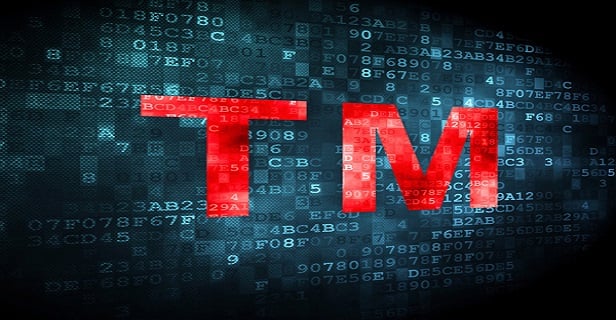Features

Trademarks Making Advertising Claims Create Sticky Situations
The SharkNinja case as well as other well-established precedents serve as powerful reminders to advertisers of certain best-practices in choosing their trademarks or evaluating whether to challenge their competitors' trademarks.
Features

Creative vs. Corporate: Patent Infringement Awards Respawn the Debate over Patenting Video Games
Patents can provide the broadest and strongest form of protection in the video game field. They can protect the methods and processes performed by the game software, and they can protect the hardware components of the game system, both in function and aesthetic design.
Features

Defamation Investigations: A Big Leap in Fighting Back
Internet tools are becoming more sophisticated in measuring the impact of online disparaging and defamatory statements, paving the way for affected business owners and celebrities to fight back by filing defamation suits seeking to recover damages for the harm to their reputation and brand value.
Columns & Departments
IP News
Federal Circuit: Case Belongs In the Northern District of California, Not Western District of Texas Federal Circuit: Arbitration Clause Did Not Prevent Institution of IPR Petitions
Features

Sender Beware: Jurisdictional Risks of Pre-Litigation Communications
The Federal Circuit recently clarified — and lowered — the threshold to exercise specific personal jurisdiction over an out of state declaratory judgment defendant.
Features

Impact of Disney's Motion to Compel Arbitration In Scarlett Johansson's Lawsuit Over 'Day-and-Date' Release of 'Black Widow'
Johansson alleges that, in order to generate new subscribers for Disney+, Disney intentionally interfered with her talent agreement with Disney affiliate Marvel Studios for her featured role in Black Widow — and thus allegedly induced Marvel to breach a promise in the Johansson/Marvel agreement for the film to be initially distributed in exclusive "wide theatrical release." Updated Oct. 1 to reflect a confidential settlement reached in the case.
Features

Eighth Circuit Permits Recovery for 'Initial-Interest Confusion' In Trademark Cases
The likelihood of confusion analysis is often focused on confusion at the time of purchase, but the U.S. Court of Appeals for the Second, Third, Fifth, Sixth, Seventh, Ninth, Tenth and Federal Circuits permit mark holders to allege infringement based on presale, initial-interest confusion. Earlier this year, the Eighth Circuit joined the majority of circuits in permitting recovery for initial-interest confusion in certain circumstances.
Features

Tenth Circuit Adds to Split on Lanham Act's International Applicability
the Tenth Circuit held that the Lanham Act can have extraterritorial application, if certain conditions are met. In doing so, the appellate court recognized — and further deepened — an ongoing circuit split.
Columns & Departments
IP News
Nike Seeks $150 Million In Sanctions from Six Chinese Banks, and Loses
Features

How NY Courts Find Copyright Preemption of State Law Right of Publicity Claims
To survive preemption under §301 of the Copyright Act, courts consider whether a state law claim in a lawsuit has an "extra element" that qualitatively distinguishes it from a federal copyright claim. Courts typically find that state law claims, such as breach of contract, have an extra element. Other state law claims, such as conversion, get varying court determinations as to whether they are preempted.
Need Help?
- Prefer an IP authenticated environment? Request a transition or call 800-756-8993.
- Need other assistance? email Customer Service or call 1-877-256-2472.
MOST POPULAR STORIES
- Use of Deferred Prosecution Agreements In White Collar InvestigationsThis article discusses the practical and policy reasons for the use of DPAs and NPAs in white-collar criminal investigations, and considers the NDAA's new reporting provision and its relationship with other efforts to enhance transparency in DOJ decision-making.Read More ›
- The DOJ's New Parameters for Evaluating Corporate Compliance ProgramsThe parameters set forth in the DOJ's memorandum have implications not only for the government's evaluation of compliance programs in the context of criminal charging decisions, but also for how defense counsel structure their conference-room advocacy seeking declinations or lesser sanctions in both criminal and civil investigations.Read More ›
- The DOJ's Corporate Enforcement Policy: One Year LaterThe DOJ's Criminal Division issued three declinations since the issuance of the revised CEP a year ago. Review of these cases gives insight into DOJ's implementation of the new policy in practice.Read More ›
- Surveys in Patent Infringement Litigation: The Next FrontierMost experienced intellectual property attorneys understand the significant role surveys play in trademark infringement and other Lanham Act cases, but relatively few are likely to have considered the use of such research in patent infringement matters. That could soon change in light of the recent admission of a survey into evidence in <i>Applera Corporation, et al. v. MJ Research, Inc., et al.</i>, No. 3:98cv1201 (D. Conn. Aug. 26, 2005). The survey evidence, which showed that 96% of the defendant's customers used its products to perform a patented process, was admitted as evidence in support of a claim of inducement to infringe. The court admitted the survey into evidence over various objections by the defendant, who had argued that the inducement claim could not be proven without the survey.Read More ›
- Questions Every Law Firm Business Development Leader Should Be AskingIn a legal marketplace transformed by technology, heightened client expectations, and fierce competition, law firm leaders must approach strategy with rigor and clarity. The following questions, accompanied by relevant statistics and explanations, offer a focused guide for uncovering opportunity and driving sustainable growth.Read More ›
